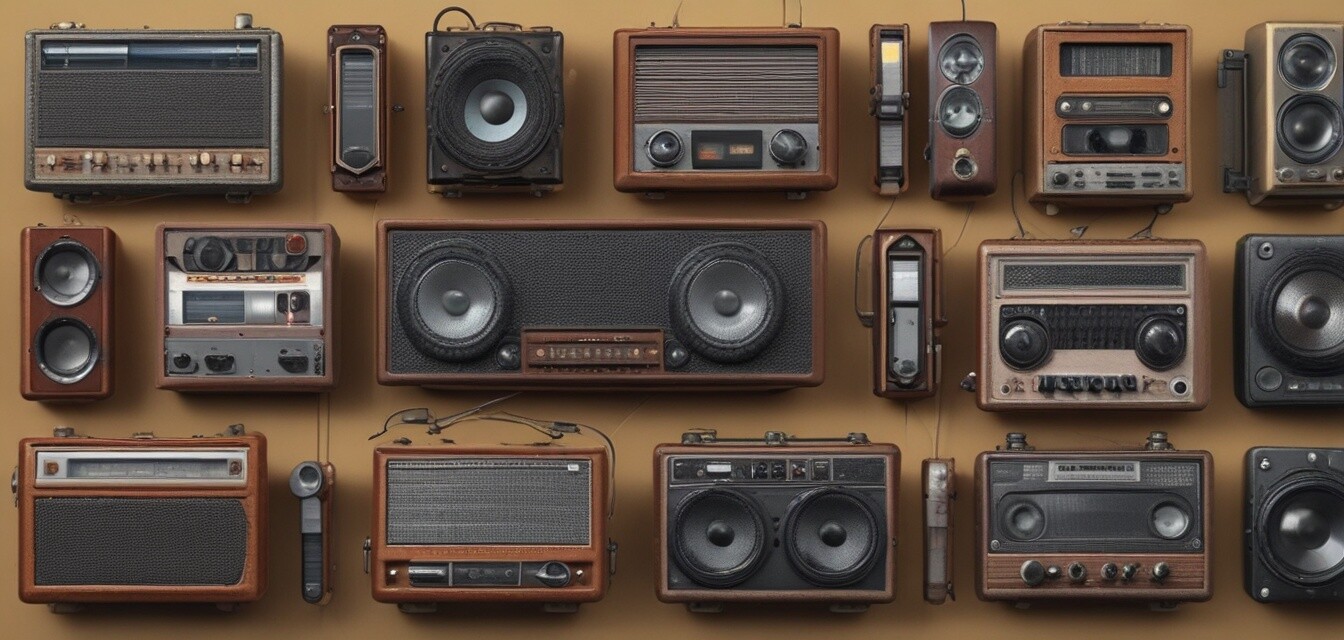
The Evolution of Sound in Advertising
Key Takeaways
- Sound design has undergone significant evolution from radio jingles to modern immersive audio experiences.
- Different generations respond uniquely to sound in advertising, shaping marketing strategies.
- Emotional resonance created by sound significantly enhances consumer engagement and brand perception.
- Brands are now leveraging advanced sound technologies to create memorable and impactful ads.
- The future of advertising sound design looks to incorporate even more personalization and data-driven techniques.
In today's bustling world, sound plays an essential role not only in everyday life but also in the advertising landscape. The journey of sound design in advertising reflects changes in technology and consumer behavior over the decades. Since the inception of modern advertising, sound has contributed to how consumers perceive brands and interact with products. In this article, we will explore the evolution of sound in advertising, its impact on consumer engagement, and the trends shaping sound design today.
Historical Overview of Sound in Advertising
The roots of sound in advertising can be traced back to radio advertising in the early 20th century. Below is a brief timeline highlighting key developments:
| Year | Development |
|---|---|
| 1920s | Radio advertising emerges, bringing jingles and catchy tunes. |
| 1960s | Television becomes mainstream; sound design incorporates visuals, using voiceovers and background music. |
| 1980s | The explosion of personal music devices, such as Walkmans, changes consumer auditory experiences. |
| 2000s | Digital platforms enable the use of personalized soundtracks in advertising. |
| 2010s | The rise of podcasts and audio streaming services introduces a new medium for experiential advertising. |
How Sound Affects Consumer Engagement
Sound has a unique ability to evoke emotions and shape perception. Here are some ways that sound influences consumer engagement:
- Emotional Connection: Brands use sound to create emotional resonance that fosters a connection with consumers.
- Memory Recall: Catchy jingles or memorable sound logos can enhance brand recall.
- Brand Identity: Sound design helps define a brand’s identity, making it distinctive in the market.
- Atmosphere Creation: Sound sets the atmosphere within ads, allowing narratives to unfold more fully.
Generational Responses to Sound in Advertising
Different generations show varying responses to sound design in advertising. Here’s how sound resonates across three major demographics:
| Generation | Sound Preferences | Engagement Strategies |
|---|---|---|
| Baby Boomers | Classic jingles and familiar tunes | Storytelling and nostalgia-driven content |
| Generation X | Eclectic mixes and alternative music | Authenticity and relatable messaging |
| Millennials | Trend-driven, upbeat tracks | Interactive and immersive ads using new technologies |
Trends Shaping Sound Design Today
As technology advances, the trends in sound design continue to evolve. Here are some key trends impacting advertising sound:
- Personalization: Advertisers leverage consumer data to create tailored sound experiences.
- 3D Audio: Brands employ spatial audio technology, creating immersive sound experiences.
- Voice Search: The growing importance of voice in technology influences advertising's auditory elements.
- Social Media Soundbites: Short, memorable sound clips are crafted for platforms like Instagram and TikTok.
Future of Sound in Advertising
The future of sounds in advertising appears promising, with several advances likely to reshape the landscape:
- AI-Driven Sound Design: Leveraging AI algorithms for targeted soundscapes and voiceovers.
- Augmented Reality: AR experiences will integrate personalized sound elements to enrich user interaction.
- Focus on Sustainability: A trend towards eco-friendly audio production and soundscapes.
Conclusion
The evolution of sound in advertising demonstrates the power of audio in connecting brands with consumers. As technology continues to advance, advertisers will likely adopt even more innovative sound techniques to enhance engagement and brand perception. Whether through nostalgia-driven jingles or immersive audio experiences, sound plays an integral role in capturing consumer attention and fostering lasting brand relationships. Stay informed about these developments through our News and Trends section, as we continue to explore the dynamic world of electronic gadgets and advertising.
Pros
- Creates emotional connections with consumers.
- Enhances brand memorability.
- Facilitates immersive experiences.
Cons
- Over-saturation of ads can lead to audio fatigue.
- Sound preferences may vary significantly by demographic.
- Potential negative perceptions if sound clashes with brand identity.
